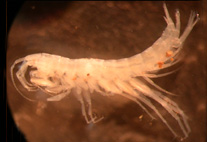Abstract
A taxonomic revision of the scorpaenid genus Brachypterois resulted in three valid species. Brachypterois serrulifer Fowler 1938, previously regarded as a junior synonym of Sebastes serrulatus Richardson 1846, can be distinguished from its congeners by having usually 16 pectoral-fin rays (vs. 15 in the congeners) and 0–22 spines on the median lateral ridge of the maxilla (vs. almost always absent), in addition to longer dorsal- and anal-fin soft rays, relatively fewer large dark spots on the caudal fin, and the posterior lacrimal spines usually directed ventrally. Brachypterois curvispina sp. nov., described on the basis of 32 specimens, can be distinguished from B. serrulata (Richardson 1846) by having fewer number of scale rows in the longitudinal series 41–45 (vs. 44–51 in B. serrulata); relatively long head, its length 41.6–44.5 (mean 43.1)% SL [vs. 38.3–43.1 (mean 40.2)% SL]; posterior lacrimal spines usually directed posteriorly, with the tip curved strongly upward in large males (vs. simply directed posteroventrally); and posteriorly directed spine(s) on the posterior corner of the outer angular ridge (vs. directed ventrally). Brachypterois serrulifer is distributed widely in the Indo-West Pacific, whereas distributional ranges of B. curvispina sp. nov. and B. serrulata are restricted to northeastern Australia and the northwestern Pacific, respectively. Intraspecific variation, including sexual dimorphism and ontogenetic changes in the three species are described in detail. A neotype, collected from southern Taiwan, is designated for S. serrulatus Richardson 1846.

